Disclosure: We may get commissions for purchases made through links in this post.
Patios are a fantastic addition to any backyard landscaping, providing us with a greater view of the outdoors as well as a place to relax and unwind. But if you're planning to put up grass on your patio, you may ask, is it alright to level it with the patio? We did the research for you, and this is what we discovered.
Generally, patios should be higher compared to grass. Having a 1/2" to 1-1/2" height difference between your patio and grass is ideal. This difference is high enough to keep unwanted grasses from growing into your patio.
In this article, we'll take a closer look at why you'll want your patio to be higher than the grass as well as the best slope for your patio. But what should you do if your patio is already existing and is level or lower than your grass? No worries; we'll cover that too. Keep reading to find out all about it.
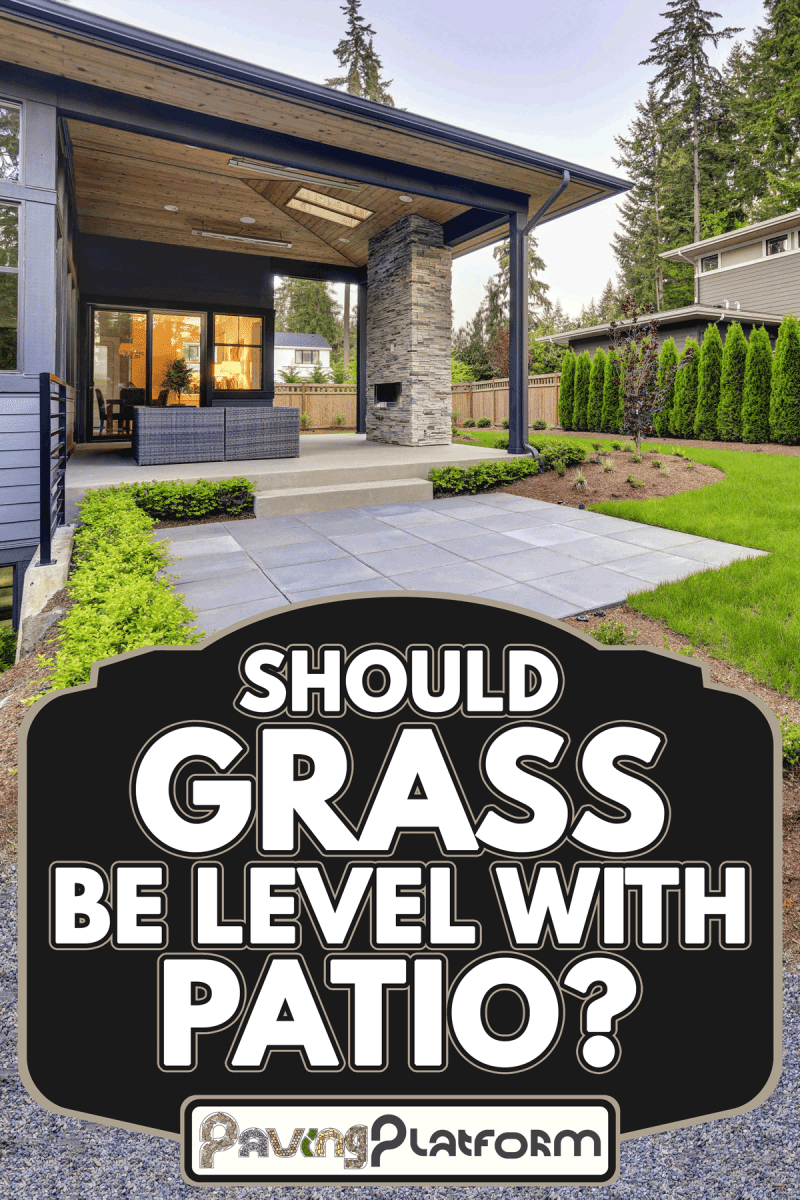
Why Should Patios Be Higher Than Grass?
There are a variety of reasons as to why patios should be higher than grass. Here are two important benefits when you do it:
- Prevent grass and weeds from creeping into your patio.
- Direct water runoff away to the grass.
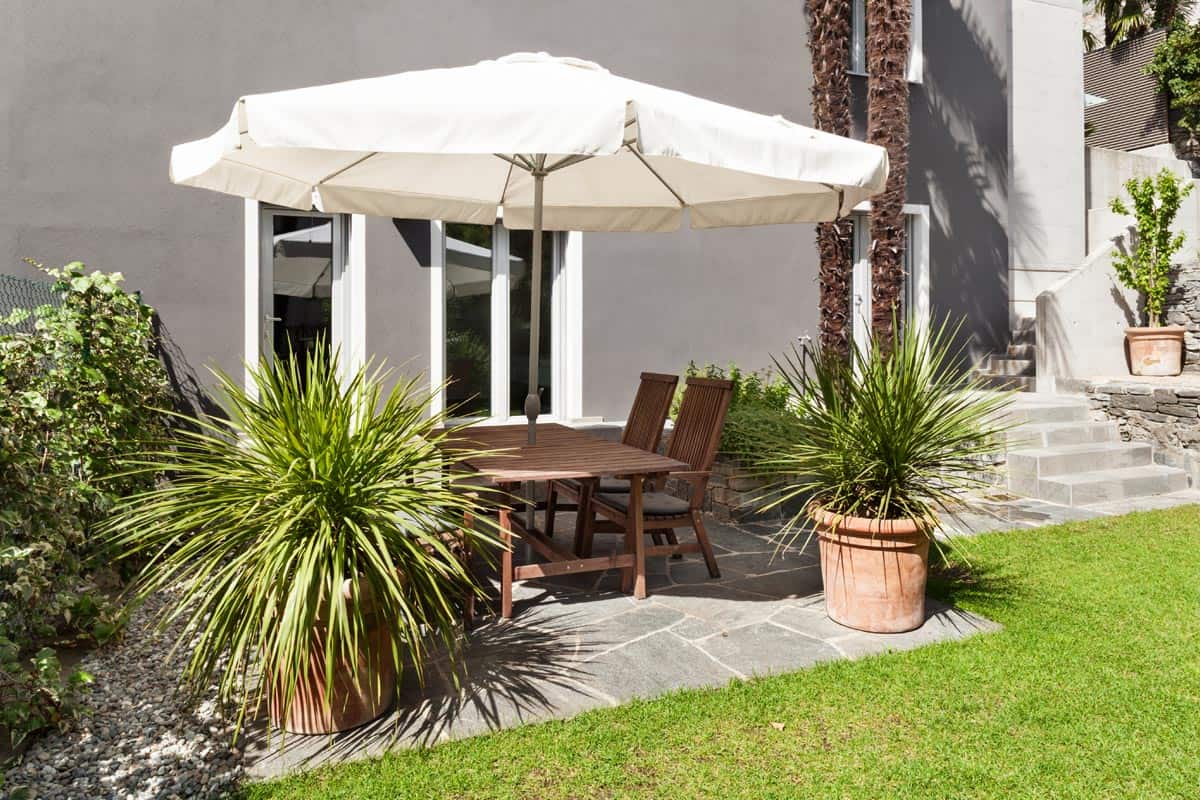
1. Prevent Grass And Weeds Creeping Into Your Patio.
One of the most important advantages of having a slightly raised patio is that it makes it more difficult for grass and weeds to grow into it. The sand hammered in between the pavers will protect your patio from weed development when it is originally constructed.
With the passage of time, this barrier will be washed away by rain, and weeds will begin to invade. For a patio that is flat or beneath the grass, this process will be faster. In any situation, new sand will be required for the patio.
2. Direct Water Runoff Away To The Grass.
Another significant advantage of having a raised patio above the grass is that water will run off it and onto the lawn, rather than the other way around. This keeps the patio dry and allows it to be used sooner after it has rained. It also helps to keep it clean.
Dirty water from the grass would run onto the patio if it were lower than the grass. Furthermore, the water runoff would contaminate the soil beneath the patio. Over time, it is likely to sink farther or become uneven.
Is It Alright For a Patio To Be Higher Than The Ideal Height?
If you don't have enough material on the side of your patio, it can compromise its structural stability. This can result in stone cracking, misalignment, stone rotation, and the polymeric sand used to hold it together coming apart, among other things.
If you still want your patio to be tall, you can do so if you add a retaining wall, a concrete layer on the outside, or make it less than 1′′ above the ground.
In addition, it can create a tripping hazard if there is too much space between the patio and the lawn.
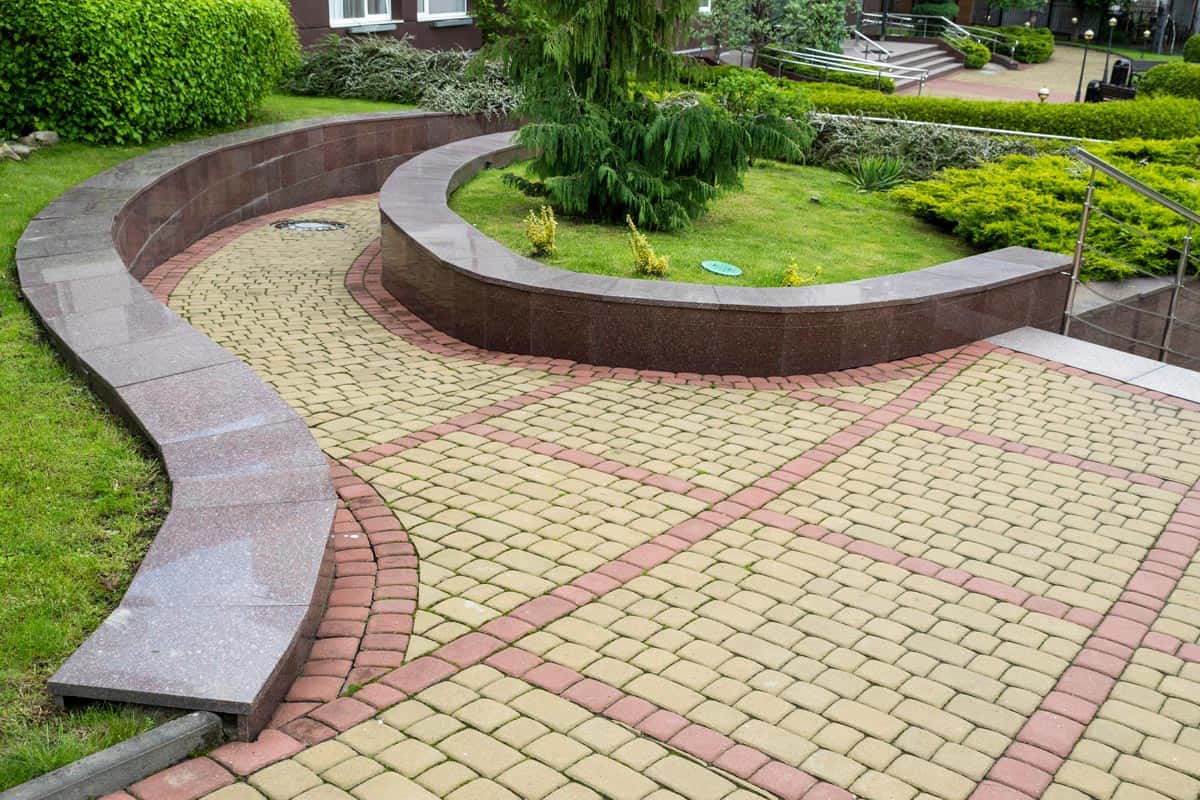
What Is The Ideal Patio Slope?
In landscaping, there are four types of yard slope you might encounter. These are:
- A gentle slope away from the house
- The yard is exactly level
- The yard slightly lopes toward the house
- A steep slope
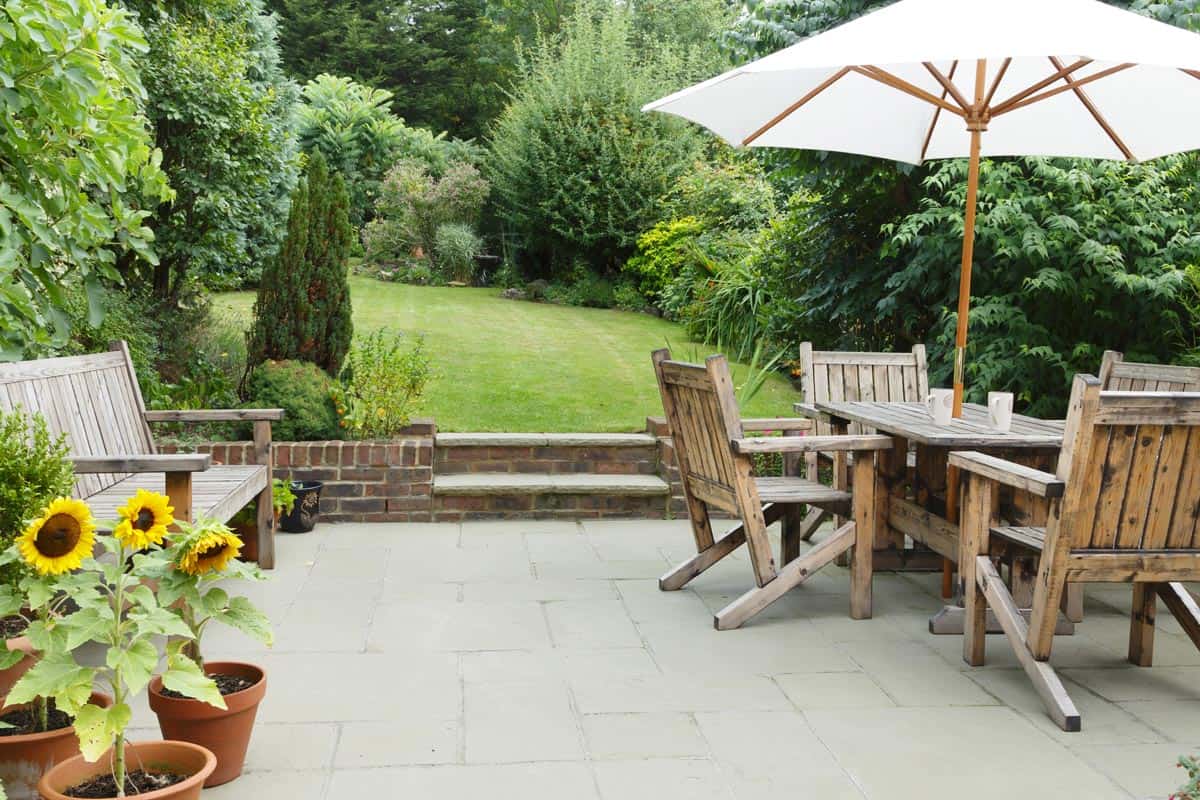
The yard gently slopes away from house
To be more attractive to the eye, you want your patio slope to be similar to your yard slope, with a goal slope of 2-3 percent. Normally, your yard slopes lower as it moves away from your house, allowing water to flow away from your home and foundation.
This is ideal since you want your patio to do the same thing so that water does not pool on top of it, causing disintegration of the polymeric sand used to bond it as well as unsightly blemishes from the water and pollutants it contains.
The yard is exactly level
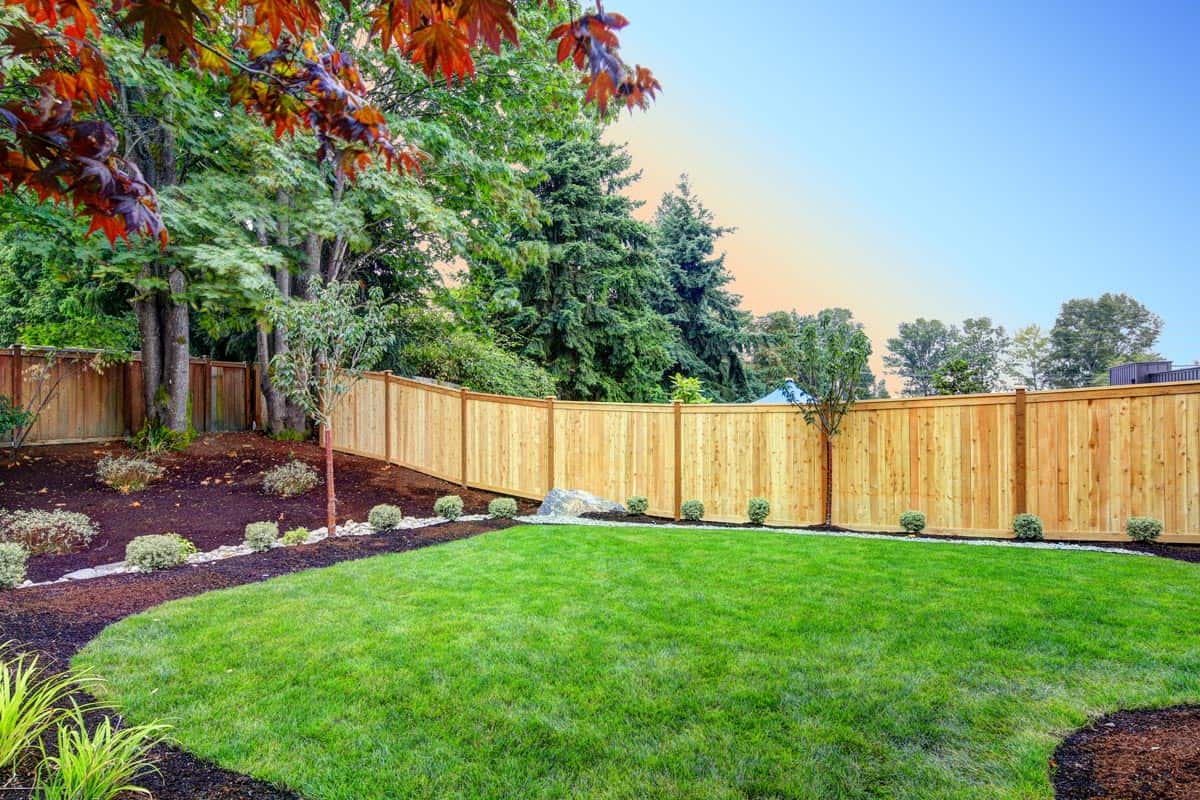
If your yard is exactly level, that's excellent because it looks great, but unless you have a drainage system in place, you're going to have some issues with pooling water. In this case, a 1-2 percent slope difference from your patio to the yard is OK because it will not significantly alter the appearance.
The yard slopes toward the house
If you are unlucky enough to have a yard that slopes toward the home, you should take care of that first before proceeding, since it may cause more problems down the line.
There are steep slopes in the yard
In this situation, you may only need to choose the intended site and level it, as well as create any necessary retaining walls to keep the soil and patio from sliding.
How To Level The Patio?
To get your ideal patio, make sure the ground is properly leveled. The layout of your patio is influenced by proper ground leveling. Here's how to properly level your patio:
- Begin by leveling from your house.
- Estimate the slope of the patio.
- Mark the levels of your patio.
- Check the level of your patio using a leveling equipment.
Why Should Patio Leveling Start From The House?
This is to stop water from running into your house's walls. If the land has a steep slope, particularly if it slopes toward your house, you'll need to be inventive and come up with a viable solution. Decking, on the other hand, would be an excellent choice for a patio.
How To Calculate The Slope Of The Patio?
Use the industry-standard ratio of 1:80, which means that the level must decrease by one unit for every 80 units of distance along with the patio.
For example, if your patio is 20 feet wide and extends 16 feet from your house, the level must be reduced by 16 feet divided by 80, or 2.4 inches.
This, however, may vary based on your project.
What Equipment Is Best To Use In Leveling Patios?
A laser level is the best instrument for accurately measuring the patio's levels if you have the funds to invest in high-quality equipment. At a low cost, certain stand-alone models can do accurate leveling. Some types can be connected to your tablet, computer, or smartphone because they work with GPS.
Click here for this laser level on Amazon.
Natural Vs. Artificial Grass- Which Is Better?
Grass is an important aspect of landscaping. In terms of size and impact, onlookers will see your turf first, even before they note any other garden accents. Making a decision is influenced by a variety of factors, including those that are most significant to you.
But take note of these factors to consider in choosing what grass to use:
- Irrigation
- Safety
- Mowing
- Maintenance
- Environmental Impact
- Installation & Maintenance Cost
Natural Vs. Artificial Grass- Pros And Cons?
To help you in choosing what grass to use, here are some pros and cons for your reference:
| Grass Type | Advantages | Disadvantages |
| Natural | Improves air quality; Pollution filter; Helps in stormwater management; Reduce environmental heating; Lower your stress levels; Cheaper to install; and Increase property value. |
Requires watering regularly; and Can be exposed to health hazard or toxins. |
| Artificial | Saves a great amount of water; Don't use chemicals to maintain; and Don't need much maintenance. |
Expensive to install. |
Final Thoughts
There is honestly no rule to follow in choosing whether to level your patio to the grass or not. However, due to practical and safety considerations, many homeowners are advised to elevate their patio a bit higher.
Just be sure not to raise the patio to the point that it can compromise your safety.
In addition, your choice of grass should also be included in planning your landscape. Go with the type that you want and is more convenient for you to use and maintain.
While you're still here, be sure to check out these articles:
Can You Put Stepping Stones On Artificial Grass? [And How To Do It]
Can You Put Rubber Pavers On Grass? [And What To Put Underneath]


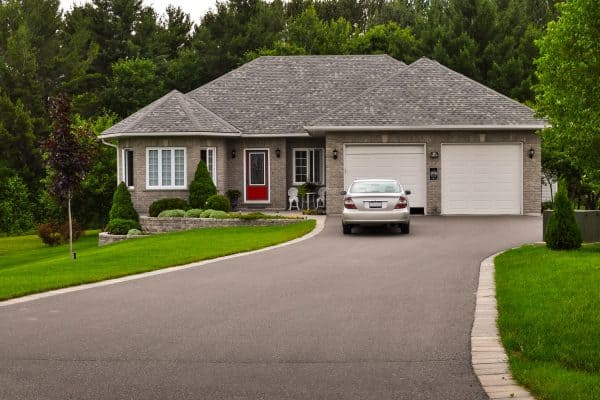
![Car on a parking lot which made from turf block, How Do Grass Pavers Work? [And Where To Use Them]](https://pavingplatform.com/wp-content/uploads/2022/03/Car-on-a-parking-lot-which-made-from-turf-block-600x400.jpg)
